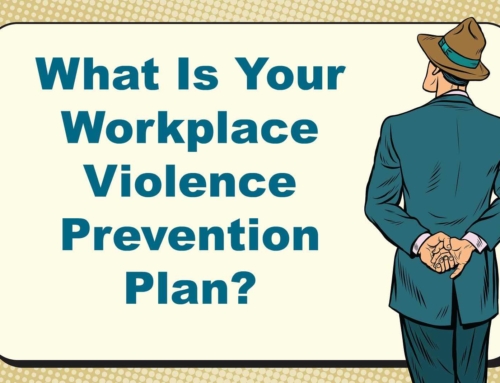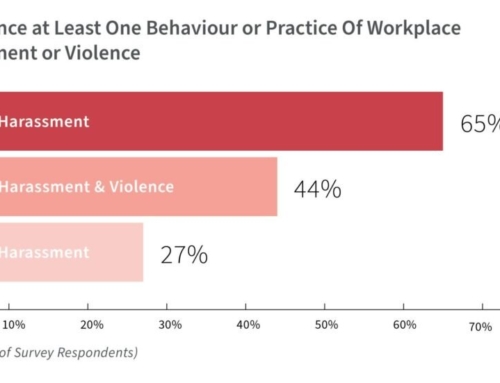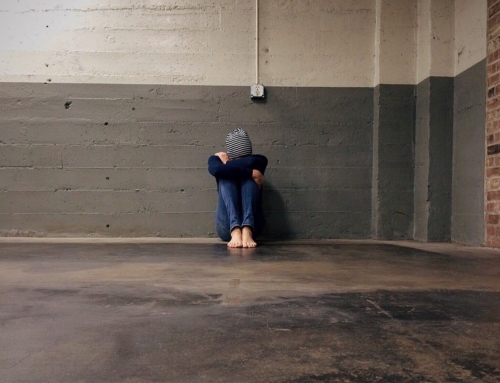This article explores some of the reasons why bullying and harassment exists in today’s workplace. Fiore Group Training is a recognized leader in improving workplace environments with effective bullying and harassment training. If you are interested in learning more about implementing harassment prevention training or workplace violence prevention training in your organization, please read this article.
Bullying in the workplace is as a common social phenomenon that affects far too many organizations. Even if we are not directly involved, the impacts are far-reaching and we have probably been affected. We have all learned, perhaps some more painfully than others, that energy in the workplace is contagious. And while it’s amazing when it’s positive, it’s outright miserable when it’s negative!
Unfortunately, sometimes when people get swept up in that contagious energy, the end result is bullying.
I had a bully in high school and like anyone else who has had one in any point of their lives, I can attest to the fact that it can be an extremely lonely and scary time.
I remember dreading going to school in the morning, knowing I would encounter my bully. But the thought of my bully all grown up, terrorizing me in my work place, makes me sympathetic to those who dread going to work in the morning to face the torment of their colleagues. But not only is bullying in the workplace pervasive, it is systemic and felt through all levels of the organization.
A recent study by Meglich & Gumbus in 2012 showed that bullying by a supervisor is perceived to be more severe than bullying by a group of coworkers, and that coworkers are more likely to bully when the supervisor bullies—contagious energy at work causing negative consequences.
It was also found that when working as a group, bullies tend to focus their attack on the target’s personal life rather than his or her work life.
This pattern of bullying brings to my mind the behavior of pack of wolf packs— stalking and circling their target until there is little hope and no escape.
[bctt tweet=”This pattern of bullying brings to my mind the behavior of pack of wolf packs— stalking and circling their target until there is little hope and no escape.” username=”fioretraining”]
Meglich and Gumbus also came up with a definition of workplace bullying that has been accepted by occupational health professionals.
Bullying at work means harassing, offending, socially excluding someone, or negatively affecting someone’s work tasks. It usually occurs repeatedly and regularly over a period of time. Bullying is an escalating process in which the person confronted ends up in an inferior position and becomes the target of systematic negative social acts.
Given those strong descriptors, I suppose I was lucky there wasn’t a pack of my high school bully!
The researchers also discussed Social Identity Theory—something that has been proposed as one possible explanation for the group bullying phenomenon. For those not familiar, Social Identity Theory explains how individuals develop a sense of “self” based in part on their membership in important groups such as the work unit.
It is believed that members of a work group integrate important group characteristics, or social identities, into their own identity, helping them make their existence meaningful.
Furthermore, “in-group members” who embody the group’s social identity, are favored and treated more positively than “out-group members”, who do not.
Therefore, the bully’s targets may be selected based on who’s “in” and who’s “out.”
There can even be bullying within the group as status and power differences between individuals can lead to lower status members feeling victimized in the hierarchy.
Not surprisingly, individuals are implicitly encouraged to conform to group norms and expectations and not behave in a way that will attract negative reactions from the rest of the pack.
Sounds like a gang to me…
Social Identity Theory goes on to explain that members of a work group that seek to belong will behave according to the group’s norms and will follow the group leadership and accede to those in power.
Therefore, if a superior engages in bullying behaviour towards an employee, other employees will see that as acceptable and desirable behaviour.
Furthermore, if someone receives encouragement or instruction by a superior to also engage in bullying, it might be difficult to resist. A worker on his or her own may not act in an abusive and bullying manner, but can become easily swept up in dysfunctional group norms that lead to becoming a bully themselves.
The “trickle- down” model of abusive supervision results in members following the lead of those higher in the organizational hierarchy. Workplace bullying can occur not only in a downward direction, but also laterally among coworkers, as the actions of colleagues become normalized and acceptable within group social dynamics.
Needless to say, all of this creates an extremely toxic environment.
But now let’s think of this pack mentality in a positive way, not as wolves hunting for prey, but as team members working together.
What if the supervisor wasn’t a bully, but an extremely respectful and compassionate individual? And what if employees saw that behaviour and realized they should also operate in a caring manner toward each other?
Of course, this works best when status and informal hierarchy are forgotten, and people are professional and kind because it makes them feel good.
Organizational leaders must demonstrate and champion ethical and respectful behavior and push employees to act with dignity and decency towards each other in all circumstances.
Let’s rid the workplace of toxic gangs and wolves on the hunt—no one should have to dread going to work.







Leave A Comment